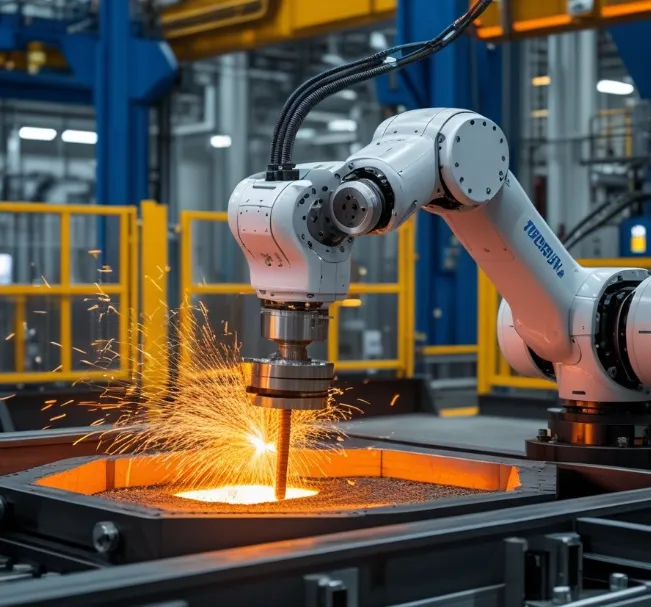Fiberglass cutting, when done manually, can expose workers to a variety of health hazards, from respiratory issues to skin irritation. With the advancement of technology, robotic systems have emerged as a safer, more efficient alternative. By integrating automated fiberglass cutting into the manufacturing process, companies can protect their workers from harmful exposure while also improving the speed and quality of production.
Understanding the Risks of Fiberglass
Fiberglass is commonly used in industries such as automotive, housing, and consumer goods because of its versatility and affordability. However, it is composed of countless small glass fibers, which can become airborne during the cutting process. Even a slight tap on the material can release these fibers into the air, posing significant health risks.
Health Hazards in Manual Fiberglass Cutting
When workers manually cut fiberglass, they are directly exposed to these microscopic glass fibers. This exposure can lead to a range of health problems, particularly when fibers come into contact with the skin, eyes, nose, and throat. Workers often need to wear protective clothing, such as gloves, goggles, and long-sleeved shirts, to minimize contact with the fibers.
The risks go beyond just skin irritation. Inhalation of fiberglass fibers can lead to more severe complications, including respiratory problems and long-term lung damage. In some cases, these fibers can become lodged in the lungs, causing scar tissue or even tumors. Larger fibers can also lead to upper respiratory infections and digestive issues.
Fiberglass fibers can also stick to clothing, transferring contaminants to other surfaces or individuals. Washing with cold water after handling fiberglass can push fibers deeper into the skin, leading to infections and further health complications.
The Benefits of Automating Fiberglass Cutting
One of the most compelling reasons to automate the fiberglass cutting process is the significant reduction in health risks. Robotic systems can perform the cutting task without exposing workers to harmful airborne fibers. By shifting human workers to a safe distance, behind the machine’s operating station, the health hazards associated with fiberglass cutting are virtually eliminated.
In addition to improving safety, automated systems offer several other advantages. They can work consistently without breaks, improving cycle times and ensuring more precise cuts. This results in higher quality products and better overall efficiency in the manufacturing process.
T.I.E. Industrial’s Commitment to Safer, More Efficient Operations
At T.I.E. Industrial, we understand the importance of creating a safe working environment while maximizing productivity. We offer refurbished Fanuc robots, which are known for their precision, reliability, and ability to handle tasks like fiberglass cutting with ease. These robots provide a cost-effective solution for companies looking to improve both safety and operational efficiency.
Why Refurbished Fanuc Robots Are the Best Choice
Choosing refurbished Fanuc robots for fiberglass cutting is a smart and budget-friendly decision. These robots undergo rigorous testing and are restored to meet the highest standards, offering the same performance as new models but at a lower cost.
Key Features of Fanuc Robots:
- Precision and Accuracy: Fanuc robots are engineered to perform tasks with incredible precision, making them ideal for delicate jobs like fiberglass cutting.
- Durability: Built to last, these robots are a reliable long-term investment for any manufacturing facility.
- Cost-Effectiveness: Refurbished robots offer substantial savings, making it possible for smaller operations to take advantage of automation without breaking the budget.
Conclusion
Automating the fiberglass cutting process is not only a step toward improving safety but also an investment in efficiency and quality. By using robotic systems like the Fanuc robots, manufacturers can protect workers from harmful exposure while enhancing productivity and cutting costs. With the added benefit of using refurbished models, companies can enjoy these advantages without compromising their bottom line.







